 Who said that in Siberia or the Urals it is impossible to grow a rich and tasty crop of sweet pepper? To do this is quite simple - you just need to choose the right variety, given the difficult climate features of these latitudes.
Who said that in Siberia or the Urals it is impossible to grow a rich and tasty crop of sweet pepper? To do this is quite simple - you just need to choose the right variety, given the difficult climate features of these latitudes.
The best varieties of peppers for Siberia and the Urals
The Siberian climate, like the climate of the regions of medium latitude of our country, is characterized by difficult conditions for growing southern crops. Short summers, low average temperatures, constant winds and sharp cooling, short daylight hours, frequent rains, sparse soil - all this, to put it mildly, is not suitable for plants that are accustomed to constant sun and heat.
However, all these factors do not prevent summer residents from introducing into their kitchen gardens cultures that seem to be completely unsuitable for such harsh conditions. Thanks to the painstaking work of breeders, today there is a fairly large selection of sweet pepper varieties (and other vegetable crops) that will give a consistently good harvest even to the north of the country. Greenhouses and hotbeds are most often suitable for cultivation, the conditions of which allow you to choose the optimal microclimate. In addition, today you can buy seeds of super-resistant varieties of pepper, which can grow even in conditions of unprotected soil. It is only necessary to comply with certain recommendations on agricultural technology, which will lead to the collection of a decent harvest.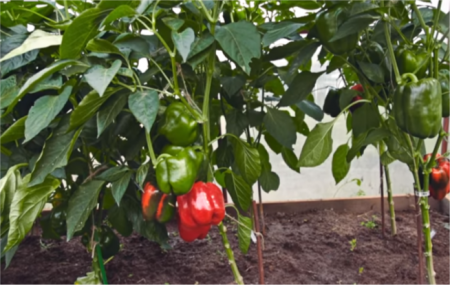
What varieties are suitable for the climate of Siberia and the Urals:
- Determinant Shorter plants are easier to care for. They also spend all their energy not on growing tops, but on tying numerous fruits.
- Early ripening. In the conditions of a short summer, the fruits must have time to ripen.
- Viable. Peppers should be well tolerated by cold, wind, sudden changes in temperature. It is also better to give preference to those varieties that are immune to various diseases.
For the greenhouse
Bell pepper loves warmth. But when weather conditions are not suitable for growing healthy vegetables, you can easily grow pepper in a greenhouse. In addition, most varieties suitable for Siberia and the Urals were created under greenhouse conditions.
Growing peppers in a greenhouse can significantly accelerate their ripening speed, improve the quality of fruits and, in general, get a rich harvest.
In the conditions of a short summer, such results cannot be achieved in an open garden.
However, not all varieties are suitable for growing in a greenhouse. It would seem, how can the cultivation of peppers differ on the street and in the greenhouse? However, the conditions of the closed ground imply the observance of their agricultural practices, which some varieties of peppers are not as good as others.
The benefits of growing peppers in a greenhouse: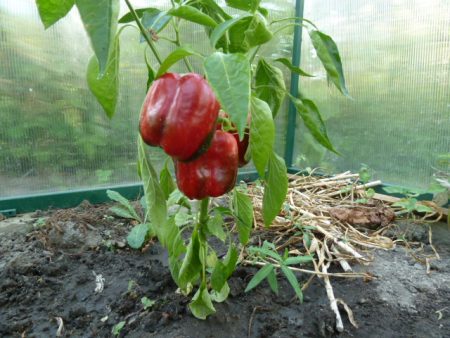
- seedlings can be planted much earlier, without waiting for the establishment of warm weather;
- in the greenhouse, the gardener can independently control the temperature and humidity level;
- caring for peppers in a greenhouse is much easier;
- in the greenhouse, peppers are protected from many diseases and insects;
- growing peppers in a greenhouse, residents of cold regions can count on a stable good harvest of this southern culture.
Blondie F1
Dutch hybrid early ripening. The first fruits can already be tried after 2.5-3 months after sowing seeds for seedlings. For a short summer - a real find. Harvest fully manages to ripen before the onset of severe cooling.
Plants of this variety are medium-sized, 60-80 centimeters tall, with very long spreading branches. Leaves are slightly wrinkled, medium in size, densely strewn on stems.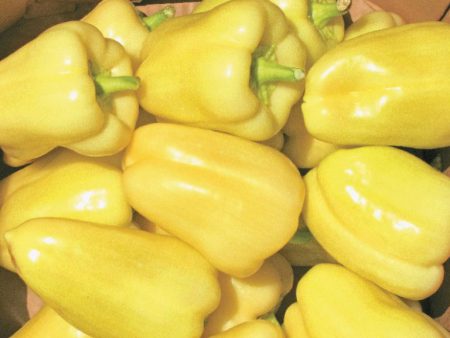
Fruits are formed large, regular cuboidal shape, divided into four faces. In the growth stage, peppers have a light green color, and by the time of full ripening, the color is filled with bright yellow and orange paints. Peppers are quite weighty, large, thick-skinned, and their mass reaches 150-200 grams. The pulp is dense, juicy and very sweet.
The Blondi F1 hybrid is valued for its high productivity: 13-14 kilograms of selected fruits are harvested from one square meter. Whereas, the performance on open beds is slightly weaker and shows up to 8 kilograms of peppers per square.
This variety is most often used on farms for sale. Blondi fruits have an excellent presentation (99%), which does not deteriorate for a long time, even during long-term transportation.
As befits the vast majority of hybrids, Blondi F1 has a high level of protection against potato virus Y, tobacco mosaic virus, bacterial spotting, cucumber mosaic virus, and such damage as sunburn.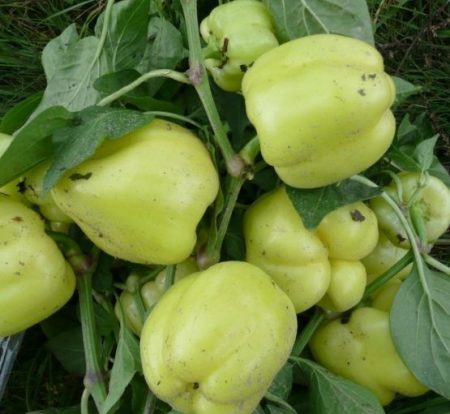
Grade value:
- high productivity;
- the appearance of the fruit;
- original color of peppers;
- high taste;
- persistent resistance to disease.
Plants of this variety well take root under various conditions, although it shows the best results nevertheless in greenhouse conditions. During flowering, lowering the temperature does not affect fruit setting. It sets fruit well even in hot and dry climates and stably tolerates sudden temperature changes.
Venti
One of the fruitful varieties of the Transnistrian breeding. Peppers can grow both in film shelters and on a street bed. However, in Siberia and the Urals, the best yield indicators are obtained when grown in greenhouses.
Venti is a very early variety. Its first fruits can be plucked as early as 90 days after the appearance of the first seedlings. The variety is highly valued for the simultaneous ripening of fruits, and therefore Venti is often grown in large volumes for sale.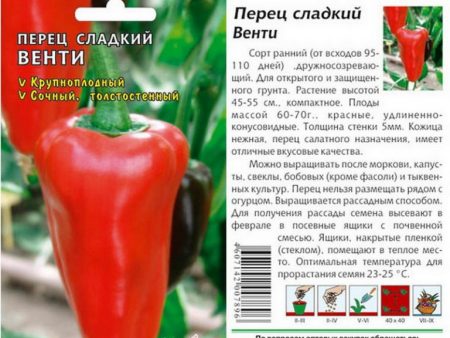
Var Venti has many advantages. One of them is the ability to form a huge number of ovaries over the entire growing season. All formed fruits have a very even conical shape and are colored red. The skin is smooth and very thin, and the inside is slightly loose and not very fleshy. The mass of one pepper is 70-80 grams.
Venti bushes, to the extent of their structure, are very easy to care for: plants grow compact up to 50 centimeters in height, have medium leafiness. Despite its rather modest size, Venti is still a highly productive sweet pepper variety. From one square bush you can collect up to five kilograms of selected peppers - nice looking and very tasty.
Grade advantages:
- very tasty fruits;
- early ripening of the first peppers;
- resistance to most diseases;
- universality of use;
- peppers are very healthy due to their high content of vitamin C.
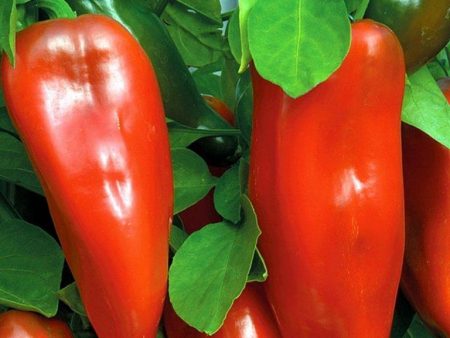
Pepper Venti is an option for those who want to get a very decent harvest of delicious vegetables, while spending a minimum of energy. The variety is unpretentious, the ability to grow both in the greenhouse and in open areas. It is enough to observe the watering schedule, reducing only on wet days and during flowering. It is better to plant peppers with the calculation of 6-7 bushes per square - so each plant will receive the optimal amount of sunlight, moisture and fertilizer. As a result, the bushes will thank you with an abundant quality crop.
Eroshka
A very early grade of sweet pepper from the agricultural company "Manul". It is popular because of its miniature bushes, which, for inspection, turn out to be very productive and resilient.
The first fruits are tied on plants already 75-80 days after sowing. And by day 95, they reach technical maturity. At this time, they can already be eaten. Peppers reach their final maturity after another 14-16 days.
Plants are medium-sized, up to 60 centimeters in height. They grow compactly, have a rich dark green crown, in which young peppercorns hide.
The fruits themselves are tetrahedral, of a clear cuboid shape, weighing 180-200 grams. The peel is thin, shiny and smooth. Its color, as it ripens, changes from light green to orange-red. Each bush produces simultaneously up to 16 fairly large vegetables. Peppers on the bushes form at the same time and ripen in a group. When removing fruits from the bush, a new formation of ovaries begins.
A distinctive and mostly positive feature of this variety is the optional binding and formation of bushes. On the contrary, the more branched the bushes, the more fruit they will produce.
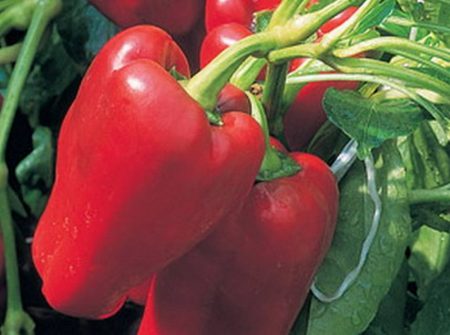 Eroshka is a high-yielding variety. From one square meter collect up to 7
Eroshka is a high-yielding variety. From one square meter collect up to 7
kilograms of pepper, despite the fact that the planting of the pepper beds is very dense - 10-12 bushes are planted on one square. This planting scheme does not prevent plants from developing well and producing very high-quality and tasty fruits. In addition, plants of the Eroshka variety are rarely affected by viral and fungal diseases.
Grade advantages:
- large-fruited;
- peppers are very juicy and sweet;
- the first crop can be harvested in June;
- fruits can be eaten fresh or canned;
- plants do not need to be tied up;
- no need to form bushes;
- cold resistant grade;
- the variety is resistant to mosaic, apical rot and verticillosis.
Cardinal
Varietal hybrid of the Dutch seed producer Enza Zaden. A special variety characterized by the unique color of large fruits: in the stage of technical ripeness, they are lilac, and when biological maturity is reached, they turn purple with a burgundy hue.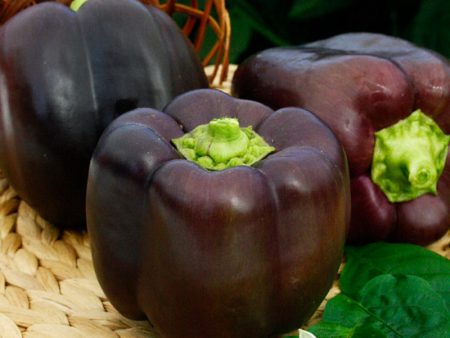
Cardinal matures quickly enough. The first fruits enter the stage of technology already by 100 days, and for full ripening they need at least another two weeks. Peppers themselves are weighty, dense, weigh an average of 220-250 grams. They have the shape of a cube. The wall thickness is 8 millimeters.
Plants of this variety are medium-sized and reach 100 meters in height. The stems are powerful, with small green leaves, slightly rough to the touch. The recommended planting scheme is 3 bushes per square meter.
The cardinal produces excellent yields when grown in a greenhouse. So, with one square meter, you can collect about 14 kilograms of selected material, which will be stored for a long time, leaving with you an excellent taste and appearance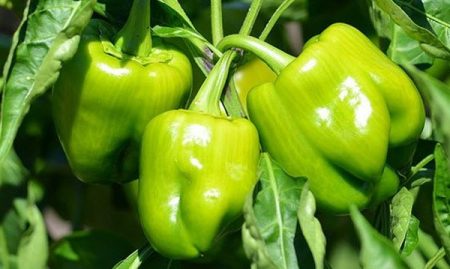
Grade value:
- the fruits are very large;
- peppers have a very unusual color;
- very high yields;
- suitable for growing in greenhouses of Siberia and the Urals;
- resistant to tobacco mosaic virus.
Korenovsky
Sweet pepper called Korenovsky is a medium-ripening variety. The fruits reach technical ripeness after four months of growth, and before biological maturity they need 140 days. Recommended cultivation in a film shelter, but also grows well in open ground.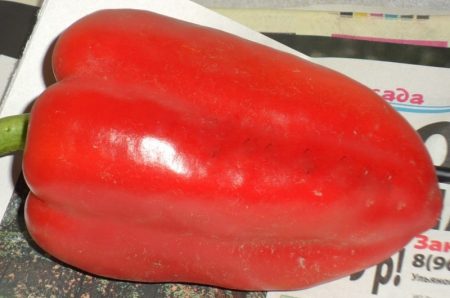
Plants of Korenovsky pepper are semi-spreading, up to 60 centimeters in height, have dense foliage. The stems of plants are very powerful, branched, hold the fruit very tightly. They continuously bear fruit throughout the summer, generously endowing with an excellent harvest.
The fruits of the variety are large, massive, weighing up to 160 grams. The peel is not more than 5 millimeters, glossy, smooth, saturated red. The shape of the resulting peppers is similar to truncated cones or a prism. Fruits are formed on the bush unevenly, grow drooping. The value of the variety lies in the high productivity of the bushes: 4.5 kilograms of selected goods come out from one square meter.
An exceptional feature of this variety is its exactingness to the condition of the soil and top dressing.With a lack of fertilizer, the bushes do not tie buds well. If the basic rules of agricultural technology are not observed, it is often struck by verticillous wilting.
It is preferable to sow seedlings in February, so that in the last days of May seedlings reach maturity for transplanting to the garden.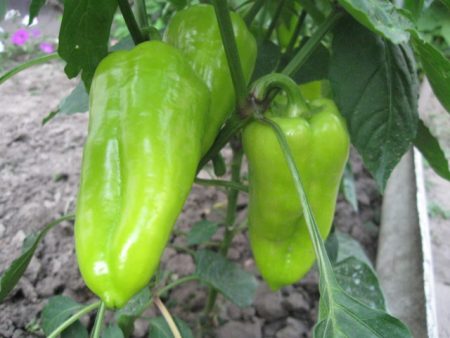
Grade advantages:
- high productivity;
- the fruits grow large;
- the variety resists various diseases;
- high quality fruits;
- good taste;
- the bushes grow compact, do not require garter.
Cons of the variety:
- poor seedlings;
- demanding on fertilizers.
Latino F1
Another hybrid, highly regarded for the excellent quality of the fruit. Like most varieties suitable for cultivation in Siberian conditions, Latino ripens very early. The first fruits reach technical ripeness by the 100th day. Even immature, they have excellent taste and aroma, so they can be added to various dishes.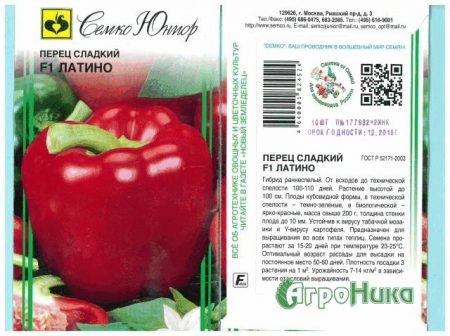
Latino plants are medium-sized. The height of the bushes is 90-100 centimeters. They grow on a bed they are compact, not falling apart. However, support and tying are still required.
The fruits of the Latino hybrid grow large and weighty. During intensive fruiting, bushes are densely strewn with bright red cubic vegetables, the mass of which often exceeds 180-200 grams. It is typical for these peppers to have a very thick crust (1 centimeter) and a tender juicy flesh.
Latino F1 is a very productive hybrid. With minimal costs for processing pepper beds, farmers get 10-14 kilograms of selected vegetables, which are often sold.
Latino peppers are easy to care for. All they need is timely mineral and organic fertilizing, moderate watering and tillage. This hybrid is highly resistant to disease, but is often affected by pests, in particular spider mites and aphids. Therefore, you should carefully monitor the plants and treat them in time from parasites that can destroy the future crop.
Grade value:
- high productivity;
- the fruits have an original shape;
- suitable for cultivation in any climatic zones of the country;
- protected from tobacco mosaic virus.
Maria
Many hybrids are created specifically for the difficult climate of Siberia and the regions located in the middle latitude. One of the best hybridized varieties is considered Maria F1. This type of sweet pepper has an average ripening period. If you sow seeds for seedlings in March, and plant bushes in May, then in the early days of July the fruits will ripen enough so that they can be eaten. On average, 103-105 days pass before technical maturity.
Plants of this hybrid grow to 85 centimeters. They are compact in size, the branches are not elongated, so the bushes do not need to be tied. The stems are not very leafy. The foliage is dark green, large, shriveled. Crohn creates a lot of shadow.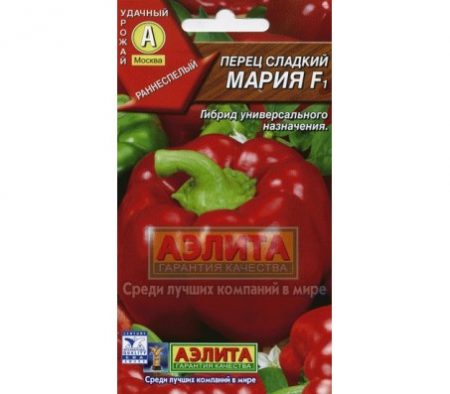
Hybrid is valued for very good fruit setting. All of them grow mixed, have average sizes. In length, ripe fruits are stretched up to 8-9 centimeters, often reaching 100 grams in bulk. Peppers are flat-round or cuboid in shape, ribbed, smooth. The skin color during ripening is yellowish, at the time of full ripening - dark red.
Maria has excellent fruiting when cultivated in greenhouse conditions. With a sufficient amount of moisture in the soil and fertilizers from one square meter, the yield reaches 8 kilograms. In open ground, this figure is less and is 4-5 kilograms.
In any case, regardless of the growing conditions, the fruits are of high commercial quality. They have a uniform color, regular shapes, not too thick but crispy skin and a bright fresh taste and a light pepper aroma.
Like most hybrids, Maria also has excellent immunity to typical pepper diseases.
Grade advantages:
- gives a stable rich harvest;
- due to their shape, the fruits are suitable for stuffing;
- the first crop can be harvested in June;
- disease resistant hybrid;
- fleshy fruits;
- Suitable for different growing conditions.
Fedilio F1
An ultra-early hybrid variety like no other suitable for growing in short summer conditions. Fruits have the property to ripen after 80-90 days after sowing seedlings.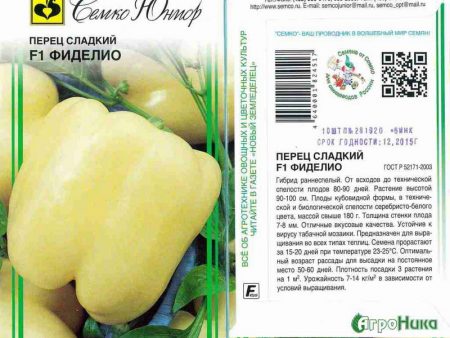
Plant Fedilio srednerosly, up to one meter high, highly leafy. Among the many dark green leaves, large fruits of a sweet vegetable are poured with juice and taste. Peppers have a pleasant silver-white or light green color, grow in the form of a cube and weigh an average of 175 grams. The skin is smooth, with an average thickness of 7-8 millimeters. The taste of the fruit is juicy and refreshing.
Fidelio is a hybrid that boasts a high resistance to diseases and pests. Bushes grow powerful, branched, sturdy. However, when grown in a greenhouse, backup is still required.
Also, the hybrid has become popular due to the high productivity of plants. When grown in open ground, the yield reaches 7-8 kilograms per square meter, while in the greenhouse Fidelio gives up to 14 kilograms of selected peppers.
Fruits on the bushes form together and ripen at the same time. The first crop is usually harvested in June. After removing the fruits, the bushes resume their vegetation and form new ovaries.
Grade value:
- earlier fruit ripening;
- peppers have a nice color;
- the crop is stored for a long time and does not deteriorate during transportation;
- good seed germination.
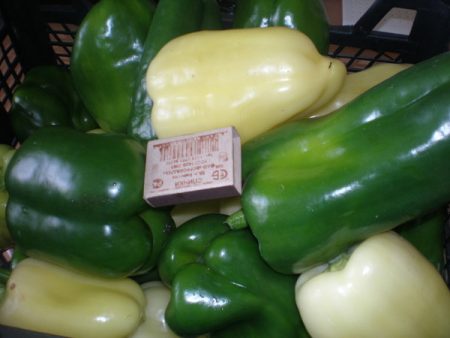
With proper care, Fidelio peppers reveal their taste. They love a lot of water and a lot of light. And they also like to be constantly warm. Therefore, the best way to grow Fidelio is greenhouse. In the conditions of a short summer and sharp changes in temperature, this hybrid will show the best indicators of yield and marketability of fruits. However, it is worth remembering that it is also necessary to timely feed, loosen the soil and ventilate the greenhouse environment. If everything is done right, Fidelio will enrich with a tasty, healthy and very large crop.
Yarik
For those who are deprived of the opportunity to grow vegetables in the garden, but want to eat hand-grown products, breeders have developed an amazing decorative variety of sweet pepper, which can easily be cultivated in room conditions. Compact bushes that grow to a height of 60 centimeters feel great when growing in a pot on a balcony or windowsill. Dark green foliage adorns the stems, giving the plant a rich look. The bush grows semi-sprawling, does not take up much space.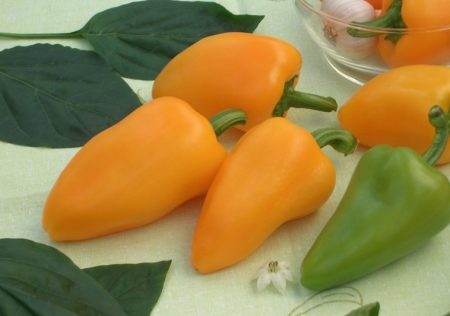
Fruits on a short bush look very impressive, because, despite the determinism of the plant, a lot of peppers are formed. All of them grow large, strong and very beautiful. Each pepper weighs 80-100 grams, has an average thickness of the peel, which is painted in yellow. The pulp is fleshy, moderately juicy and tasty. The shape of the fruit is an even cone.
Yarik - grows vibrantly in low light conditions and low humidity. However, for better growth, you still need to spray the leaves once a week with warm, settled water. Living in an apartment environment, peppers of this variety are protected from various diseases and insect infestations. Therefore, growing
Yarik at home, you can forever forget almost all the ailments that haunt this culture in the garden. The only thing that can happen is yellowing of the leaves due to a lack of nitrogen or other mineral elements.It is necessary to nourish the plant in a timely manner, as well as keep the peppers in a warm and well-lit place, since sweet pepper, first of all, is a southern culture and can be capricious with a lack of minimum necessary conditions.
Yarik peppers ripen very early, which cannot but please lovers of sweet pepper. It can be enjoyed by a delicious vegetable in 85-90 days after sowing.
The yield of potted varieties is usually average. But, when it comes to the variety Yarik, then here all the indicators are at the highest level. The yield of this pepper is very high. From one bush you can collect up to 4 kilograms of weighty peppers, which go well in pickles, for canning, and are eaten fresh.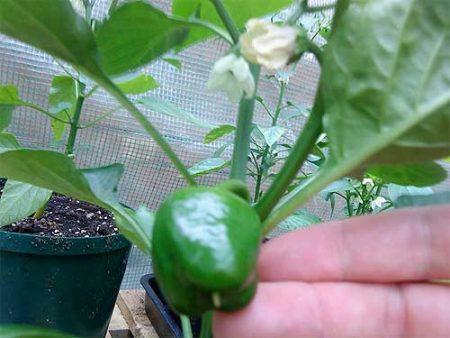
Grade Advantages:
- can be grown in pots;
- gives a rich harvest;
- matures very early;
- the fruits are all large and tasty;
- does not get sick.
Peppers for open ground
For those who prefer to grow vegetables in open areas, there is a wide variety of sweet pepper varieties that can calmly endure the unstable weather of Siberia and the Urals and ultimately give an excellent harvest of delicious fruits.
For open ground, first of all, cold-resistant, productive varieties that are rarely sick and quickly ripen are suitable.
Firstborn of Siberia
Even the name of the variety indicates that these peppers are just for the Siberian climate. This variety has a very short vegetative period. The first wave of harvest can be harvested already on the hundredth day after sowing. Pepper seeds have excellent seedlings. Seedlings grow strong and strong, steadily tolerates a pick. Seedlings are planted in late May or June, and in the early days of August, numerous fruits begin to appear.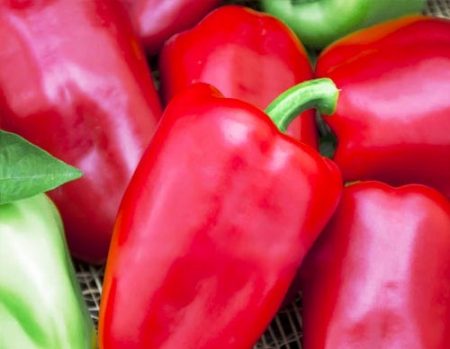
Plants have a determinant type, grow up to 45 centimeters in height, and have medium foliage. Small pyramidal fruits are formed on the hands, which, in the stage of technical ripeness, are painted in a light yellow color, and when fully ripened, they acquire red hues. The skin of peppers, whose weight is 50-70 grams, is thick, often reaches 1 centimeter. The taste of peppers for this variety is quite sweet and juicy.
The first-born of Siberia very well tolerates temperature differences, windy and cloudy weather. It reacts sharply to excess moisture, but is rarely affected by fungal and viral ailments. Plants have a special immunity to the appearance of vertex rot and the tobacco mosaic virus.
Even sometimes growing in very unfavorable conditions, the plants very well tie fruit. The average yield per square meter is about 9-12 kilograms. All fruits have positive external characteristics. One of the main features of the variety is the suitability of fully ripened fruits for long-term storage.
Siberian F1
Another representative of the group of cold-resistant and unpretentious varieties of pepper, intended for growing in open ground of medium latitude and Siberia. Sibiryak F1 is a hybrid created by domestic breeders for cultivation in sparse soil in the conditions of short and cold summers. The ripening period of fruits of this variety is 115 -118 days from the time of sowing.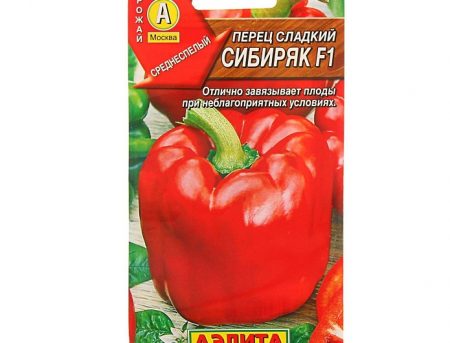
A hybrid with very tasty and juicy red fruits in the shape of a prism. In length, they grow up to 12 centimeters, weigh 140-150 grams and have a thick crust of 6-8 millimeters. Peppers are formed on tall bushes (90-110 centimeters), which are covered with dense dark green foliage.
The plants begin to bear fruit by August and are tied for another two months. Their distinctive feature is long-term and massive fruiting, which does not stop even during periods of special cooling inherent in the middle zone of the country.
Siberian F1 - one of the most common varieties for the north, characterized by unpretentious care. He is rarely sick and affected by insects. The created minimum conditions for the normal growth of bushes, and this is weeding, loosening, watering and top dressing, contribute to the rich yield of quite sweet and large fruits.
Novosibirsk
The brainchild of breeders of the West Siberian Vegetable Experimental Station. The variety is recommended for cultivation in various conditions, but shows very good results in open ground.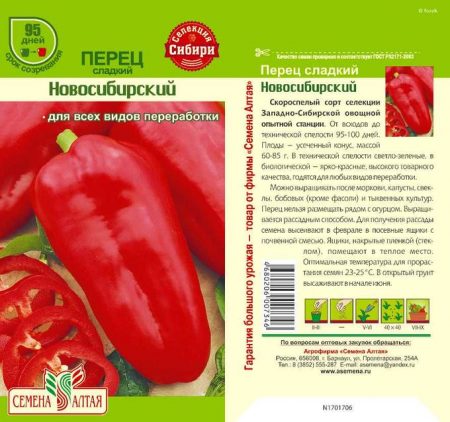
Early ripening grade. The first fruits appear after three months of cultivation. And they reach the stage of technical ripeness by 110 days.
Plants of the Novosibirsk variety grow compactly. In height, they rarely reach 55 centimeters. Due to their short stature, it is quite easy to care for them, and during the cold weather cover them with temporary film cover.
The fruits on the bush are arranged randomly, sticking out mainly upward, creating the impression of a floral bouquet. All peppers in the stage of biological ripeness of red color, weighing up to 150 grams, have the shape of a prism, ribbed. Fruits are fragrant, juicy, with a thin peel. Peppers are excellent for all types of processing.
The yield is quite high - up to 10 kilograms per meter of planting (with the planting scheme - 6 plants per square).
Variety Novosibisrkiy is distinguished by high resistance to diseases. It tolerates adverse environmental effects.
Hot peppers
Hot peppers as well as sweet peppers can be grown in the most unsightly conditions. Many varieties of hot vegetables are grown in open beds and in greenhouses. The most adapted peppers include Homer Pepper and Lightning.
Homer pepper F1
This hybrid can be grown in any conditions, while it gives a stable crop. Homer pepper is an early ripe variety. Its fruits ripen 100 days after sowing, and peppers reach the stage of biological maturity by 120 days.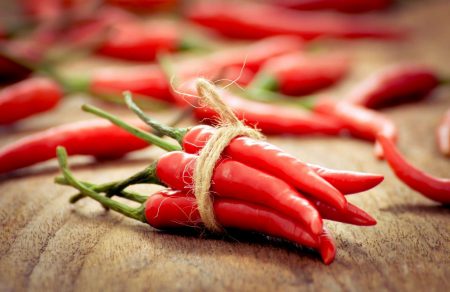
Plants have a tall structure. Often grow up to a meter high. The bushes grow in close proximity, have a small foliage. Leaves are medium sized, slightly wrinkled.
The fruits of this hybrid grow wilted on the bushes. They have the shape of a cone. Very long and narrow - a typical structure of hot pepper. The skin is glossy, slightly wrinkled. The fruits are first light green, then painted in a juicy red color. Peppercorns themselves grow large, weighing up to 35 grams. The number of nests is 3-4. The severity is moderate, the aroma is not pronounced.
For hot pepper, the variety has a high yield. With one square meter, a total of 3.5 kilograms of burning product comes out.
Lightning F1
Fine varietal variety of hot peppers. The series “Lightning” is represented by three varieties, mainly different in color - “Lightning Red”, “Lightning Yellow”, “Lightning Black”. It is recommended to grow these peppers in the greenhouse.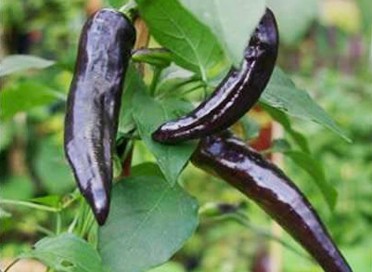
These hybrids have a mid-early ripening period - 110-118 days after germination. Plants grow powerful, sprawling, branched. Garter and support are required. The fruits grow on the bushes in drooping condition. Peppers have the shape of an elongated cone. The skin is glossy, saturated color (black, yellow or red). The taste is slightly sharp. Suitable for adding to freshly chopped dishes.
Hybrids of this variety have resistance to disease, tolerate bad weather. Even in the most unfavorable periods, the fruits are well tied and bear fruit long and plentifully. From one bush you can collect up to 1 kilogram of this hot pepper.
Reviews
Maria
Somehow the Black Lightning pepper was grown. I didn’t like it. At first, everything went well. Seedlings quickly sprouted, went to growth. Seedlings were also strong. Planted bushes in the last days of May in a greenhouse. From that moment, the bushes continued to grow very sparsely. The lower foliage turned yellow.The fruits tied for a long time. In fact, the peppers themselves grew well, very small, maroon. It tastes no piquancy - very sharp, just do not eat. Before that, I cultivated varieties much better. For me, Cayenne and Twinkle showed themselves best.
Alexander
For many years we have been growing bell pepper in our Urals. We constantly take different varieties for seedlings, experiment, choose the best. The California Miracle suits us best. For me, you can grow it anywhere. Excellent unpretentious pepper. Very productive, the fruits are beautiful, large are obtained. The only negative - the crust is not too thick, apparently due to lack of sun. In general, what you need. Of the other varieties, Viking, Festival and Mustang were also remembered. I remember that in one year he gave 3-4 kilograms of selected peppers from one bush.




 Calorie pepper stuffed with meat and rice - BZHU per 100 grams
Calorie pepper stuffed with meat and rice - BZHU per 100 grams Gorky pepper - the best varieties for open ground
Gorky pepper - the best varieties for open ground Hot pepper seeds - the best varieties for open ground and reviews
Hot pepper seeds - the best varieties for open ground and reviews Capsicum tincture for hair - how to use and reviews
Capsicum tincture for hair - how to use and reviews